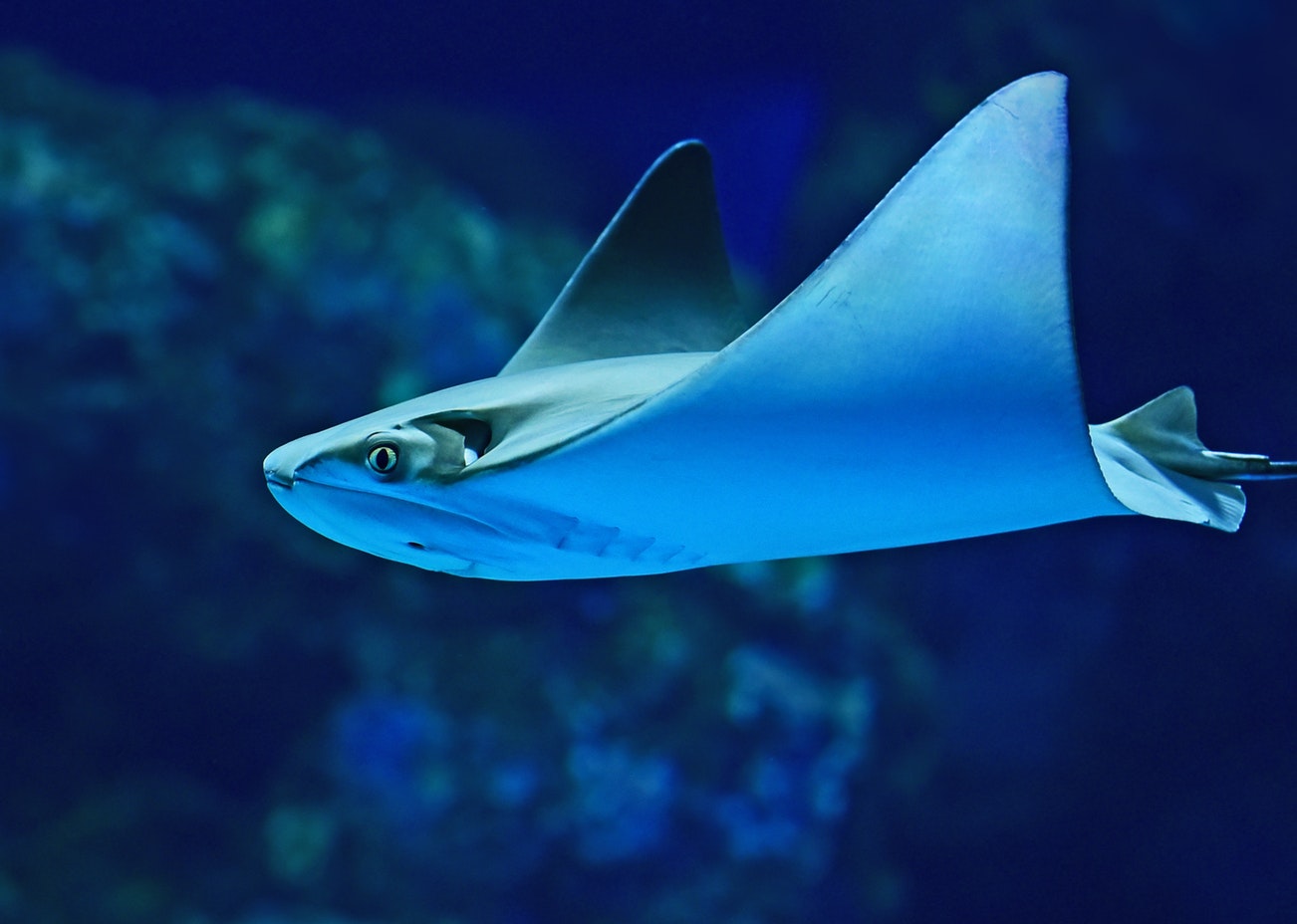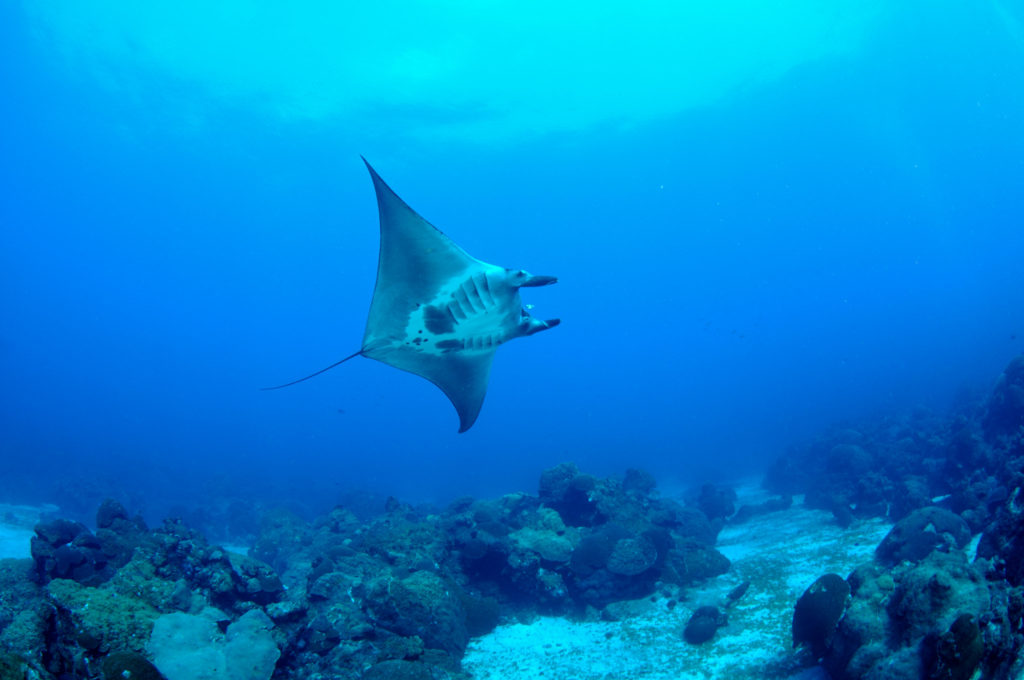
What Makes Manta Rays and Stingrays Different?
Manta rays and stingrays are both members of the Chondrichthyes class, which also includes species like sharks. These species are related due to their cartilaginous (the material in our noses and ears) skeletons. Manta rays and stingrays have large, flat body shapes are very similar with heads fused directly to wide pectoral fins used for propulsion. They also have similar tail-like appendages.
Morphology
Although they are related, stingrays and manta rays still have several differences. Manta rays do not have the infamous barb found on their tails, while stingrays utilize the barb as a defense mechanism. Manta rays have a wide mouth found at the front edge of their bodies with cephalic lobes (specialized, flap-like appendages) on either side that help funnel plankton and other small organisms into their mouths for filter feeding. This feeding method is ideal for manta rays as they spend their time in coastal and pelagic waters where they can swim through the water column collecting tiny marine organisms. Stingrays have a mouth on the underside of their bodies that is strong enough to crush clams and crustaceans that they find along the bottom of the ocean in coastal waters.
Manta Ray Conservation
Manta rays can reach an impressive 25 ft. across their wingspans making them one of the largest animals in the ocean. Their graceful movements through the water and approachability make elusive manta rays highly attractive to divers when they can actually be found. Unfortunately, they are fished predominantly for their gill rakers and are often victims of bycatch in other commercial fishing efforts. These practices threaten the widely distributed and slow-growing species which has led to its listing as Threatened under the Endangered Species Act (ESA) and under Appendix II of the Convention on International Trade in Endangered Species (CITES).
These listings along with regulations, education, and the creation of protected areas are helping to protect the manta rays and their habitats from continued threats. Flower Garden Banks National Marine Sanctuary, in particular, hosts a number of manta rays that feed off of the extensive phytoplankton found in the deeper waters alongside the underwater banks. Not only is this region notable for the presence of so many manta rays, but it has also been recently identified as the first known manta nursery. This new information can help us to better protect manta rays, and we are slowly learning more!

